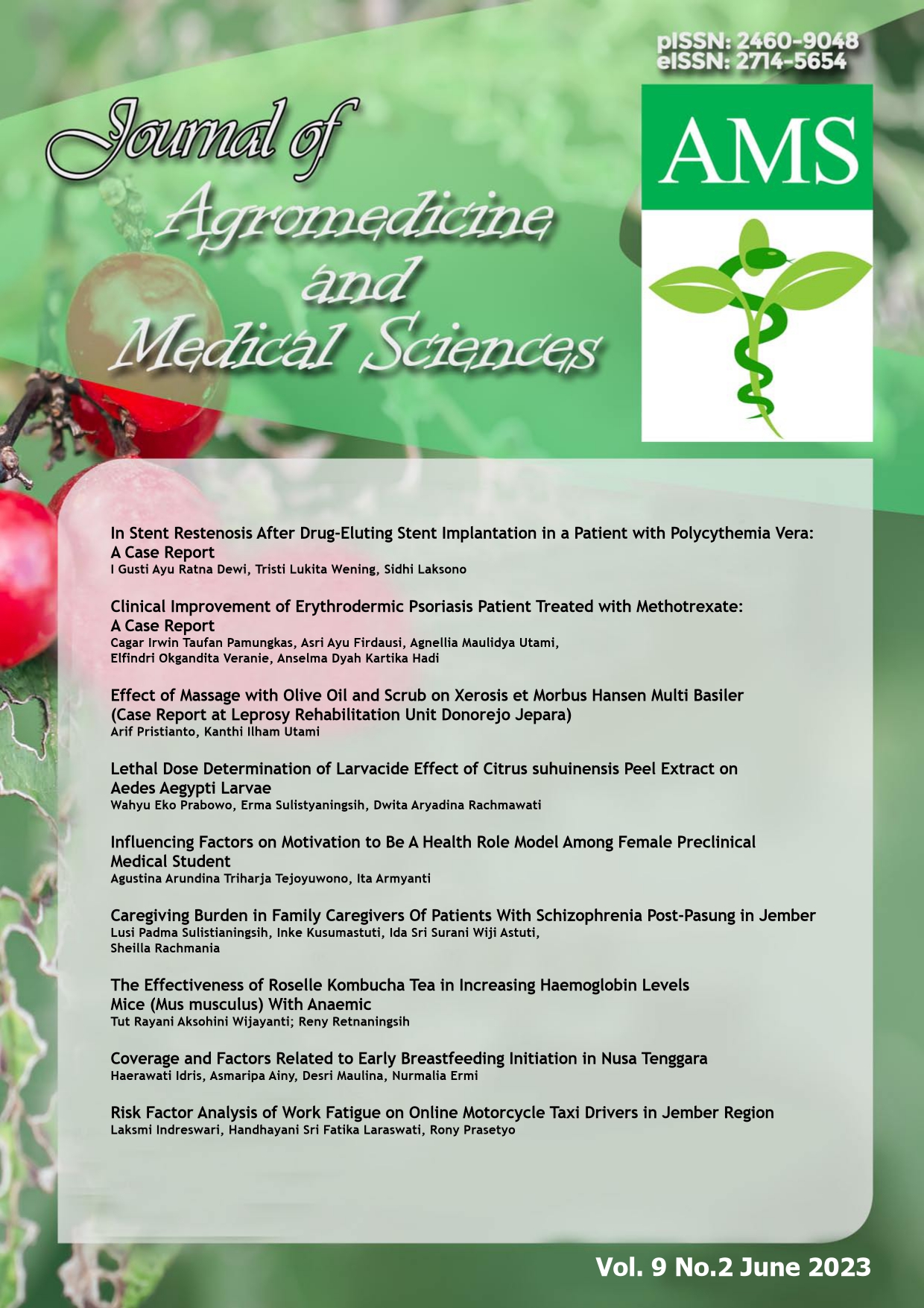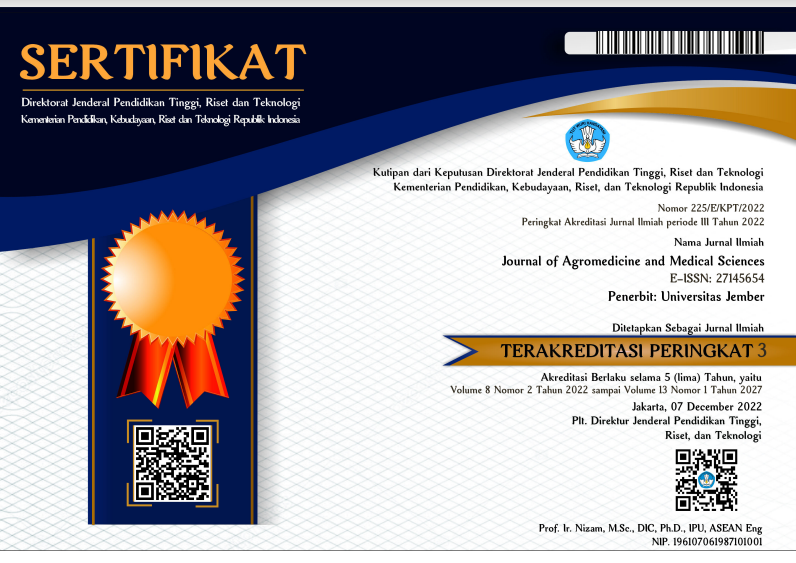Differences of BUN and Serum Creatinine Values in Severity of Diabetic Ketoacidosis Patients at RSD dr. Seobandi Jember
DOI:
https://doi.org/10.19184/ams.v9i2.33947Abstract
Diabetic ketoacidosis (DKA) is an acute complication of diabetes mellitus classified as mild, moderate, and severe based on the severity of the metabolic acidosis and level of consciousness. As one of hyperglycemic crisis, DKA causes kidney dysfunction which then trigger acute kidney injury (AKI). High mortality rates, recurrent DKA (repeated episodes), increased health care costs, and the risk of further complications can occur due to AKI. Early detection of AKI risk by renal function tests such as blood urea nitrogen (BUN) and serum creatinine can be done because its easy method hence it is widely used for routine evaluation. This study aims to determine the differences of BUN and serum creatinine values ​​in DKA patients classified by severity as a prognostic markers associated with the risk of AKI in RSD dr. Soebandi Jember. The design of this study was analytic observational using a cross-sectional design obtained from medical records of 34 patients. The results showed a non-significant difference in BUN values ​​(p=0.085) and a significant difference in serum creatinine values ​​(p=0.033) between mild, moderate, and severe DKA. Serum creatinine evinced to be more reliable indicator than BUN as prognostic marker of DKA in the setting of AKI risk.
Keywords: DKA, prognosis, acute kidney injury, AKI























